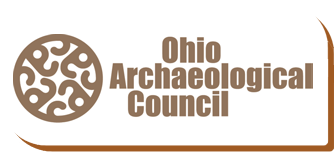A Comparative Analysis of Late Archaic and Woodland Period Mobility Via Lithic Assemblages in the Monday Creek Watershed
Collin M. Williams
Abstract
Late Archaic and Woodland period archaeological sites are common in Southeast Ohio; however, little work has been done comparing their lithic assemblages. This paper presents a study of three mid-to-late Holocene sites found along Monday Creek, a tributary of the Hocking River, to serve as a baseline for future comparisons. The assemblages from Taber Well (33HO611), Greendale Ridgetop (33HO369), and Monday Creek Workshop (33HO413) were analyzed to compare tool type frequencies, production strategies, and tool curation to assess group mobility and variation in site type with others, thus providing a more holistic understanding of prehistoric lifeways during this temporal transition. Metric indices used to indicate tool form were consistent at all three sites; however, Monday Creek Workshop exhibited greater tool modification, while Taber Well and Greendale Ridgetop showed greater use of expedient tools. Alongside this shift in tool use, was the development of horticulture and increased sedentism.
Keywords: Late Archaic/Woodland, Hocking Valley, lithics, plant domestication
Introducing the Serpent Mound’s Fort Ancient Village: A Preliminary Analysis of the Fort Ancient Component at Serpent Mound State Memorial, Adams County, Ohio
Robert A. Cook and Amanda D. Roberts Thompson
Abstract
Between 1988 and 1994, a series of mitigation excavations conducted by the Ohio Historical Connection (OHC) occurred at the Serpent Mound site, in the same area as the Fort Ancient village site partially excavated by Frederic Ward Putnam of Harvard University’s Peabody Museum in the late 1800s (Putnam 1890). In the following paper we present a brief summary of these excavations as well as an overview of the artifacts recovered, specifically focusing on lithics and indigenous ceramics. Available diagnostic evidence from the excavations is consistent with Early to Middle Fort Ancient (ca., AD 1000-1400). We combine this information with the results of a magnetic gradiometry and susceptibility survey of the site (Burks 2017) which has allowed us to more fully situate the OHC investigations within a possible village plan for the Fort Ancient component. In so doing, not only can we more fully interpret the OHC collection, but we also are better informed to suggest specific locations at the site that would be good priorities for future testing, which we do in the concluding section of this paper.
